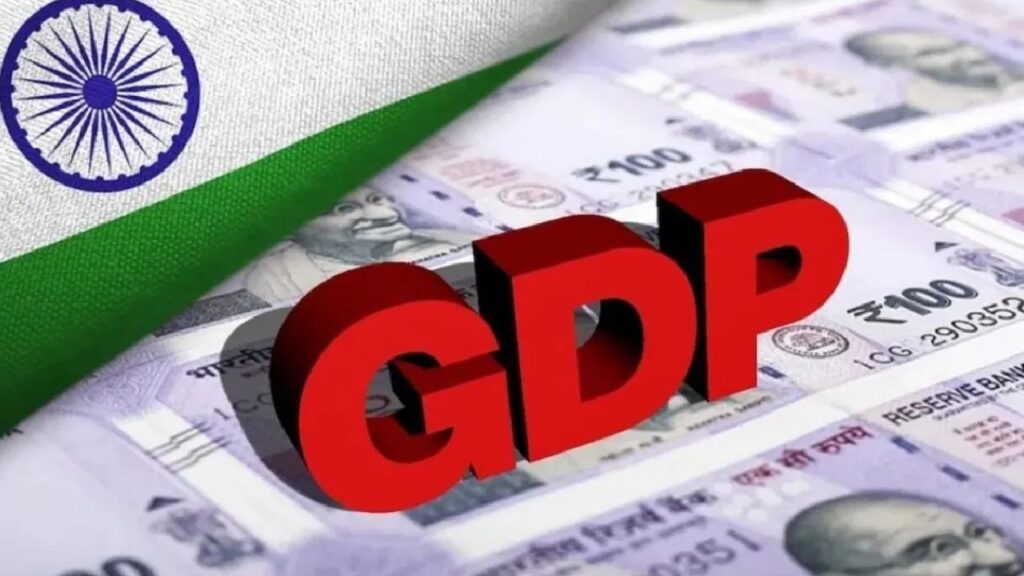In recent times, India has been receiving positive news regarding its economy and GDP figures. However, a recent estimate has emerged that could dampen the spirits of both the government and the general public. According to a poll conducted by the foreign agency Reuters, India’s GDP for the first quarter might fall below 7 percent. The agency suggests that the conclusion of the Lok Sabha elections in June has led to a significant reduction in government spending, resulting in a potential slowdown in GDP growth for the April to June quarter.
Prime Minister Narendra Modi, who is serving as the head of the government for the third consecutive term, has made substantial capital expenditures, contributing to previous quarterly growth rates of 7 percent or more. However, the need to curb public spending before the parliamentary elections has negatively impacted growth. Although Modi’s party, the Bharatiya Janata Party (BJP), has returned to power, this time it is via a coalition rather than a majority government. Let us delve deeper into the insights provided by the Reuters poll.
Poll Estimates Overview
According to the Reuters poll, the GDP is estimated to grow by 6.9 percent year-on-year for the April-June quarter, a decrease from the previous quarter’s 7.8 percent. The poll included 52 economists and was conducted between August 19 and August 26. The economists provided a growth forecast ranging from 6 percent to 8.1 percent. The government is set to announce the April-June quarter figures on August 30. Even if the Reuters estimates come to fruition, India will retain its position as one of the fastest-growing economies in the world, with recent quarters showing growth exceeding official estimates.
Improvement in Personal Consumption Growth
Dheeraj Nimm, an economist at ANZ, indicated that the curb on government spending was significant for both central and state levels, particularly concerning capital expenditure. He noted that the slowdown in growth is a temporary phenomenon. However, personal consumption growth showed improvement compared to the previous quarter, alongside general stability in the manufacturing and non-public sectors. He mentioned that the focus would be on monitoring how much improvement occurs in personal consumption, as this will signal the growth trajectory for the upcoming quarters.
Projected Growth Rates
Looking ahead, the growth rate may experience a slight decline. The current fiscal year is projected to see growth of approximately 7 percent, with the next fiscal year expected to record a 6.7 percent growth rate. In contrast, the prior quarter witnessed economic growth nearing 8 percent. To stimulate consumption, the government allocated billions of dollars in its first budget after the elections for rural spending and job creation. According to the latest government estimates, the economy is expected to grow in the range of 6.5 to 7.0 percent during this fiscal year.
Expectations for Improvement in Domestic Demand
Kunal Kundu, an economist at Société Générale, expressed a cautious expectation for a slight improvement in domestic demand, although it has not yet emerged as a significant driver of growth. The persistent weakness in core inflation suggests that real consumption improvements may still be some quarters away. In July, the country’s retail inflation stood at 3.54 percent. Overall, there are expectations that inflation will average around 4.5 percent for both the current and next fiscal years.
Summary of Economic Indicators
| Indicator | Current Quarter Estimate | Previous Quarter Estimate | Annual Projection |
|---|---|---|---|
| GDP Growth Rate | 6.9% | 7.8% | 6.5% – 7.0% |
| Retail Inflation | 3.54% | N/A | Expected average 4.5% |
In conclusion, while the upcoming GDP figures may bring cautious sentiments, analysts remain optimistic about the potential for growth recovery in subsequent quarters, bolstered by government initiatives aimed at boosting consumption and investment.

